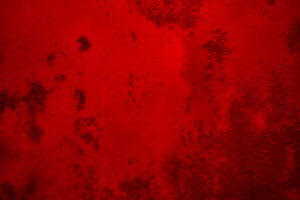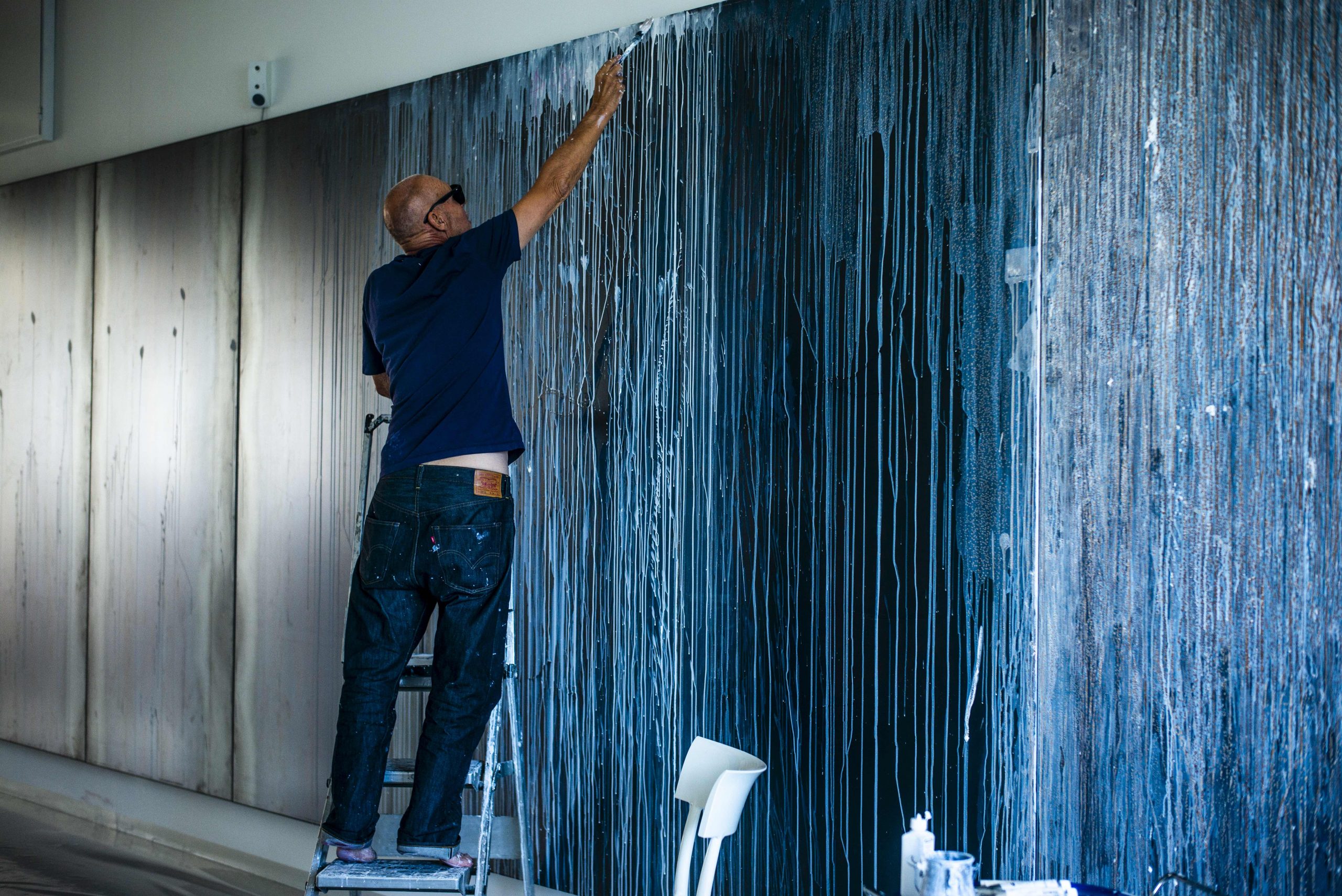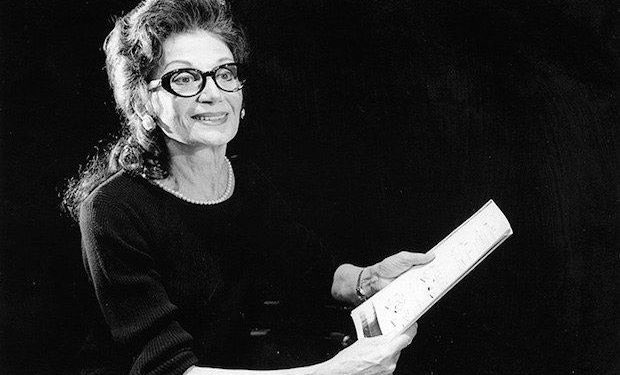Even though Comte is known for his flashy fashion photography, lately the artist has been producing works regarding the climate crisis. The journey in which photography remains in the background while multimedia works and installations on large surfaces, produced by the use of natural pigment and ink,come to the forefront actually extends far back. In his work, it is possible to see his observations, recordings, his inner journey and his awareness of the environment on the countless trips and research visits he makes in different parts of the world.
Comte’s exhibition titled Light IV opened at Dirimart on November 21st. This exhibition is an extension and a part of his other exhibitions that recently took place in different parts of the world. This abstract unity becomes more meaningful when we view Comte’s work more closely. At the exhibition in Istanbul, we get to see a wall produced through layers and layers of salt, natural pigment and black ink yet again. The fact that this wall, which is actually black and white, becomes colored through the use of other objects is a sign that matter itself is much more than we are able to see.
From our conversation with Comte, it is difficult to decide whether the journey that brought him from the past to the present or his plans for the near future is more exciting. Both of them are parts of a whole, just like they are in his works. Despite what he has seen and managed to show, Comte is ambitious and bold enough to think that we haven’t seen anything yet.
Many people interested in the art world know you from your fashion photography. However, we have come across your works focusing on environmental disasters and the climate crisis for a while at various exhibitions and installations of different scales. What kind of a path did your career and personal story take to get here? Would you identify yourself as an ex/old photographer and new environmental activist?
First of all, I’m not an activist. In fact I’m the last person to be called an activist. I am an observer. The only thing I did when I worked in the fashion industry was work hard and I never imagined that I could gain such a reputation. I was lucky to have been at the right place at the right time. Therefore, I consider myself to be very lucky to have had a career like this. Over the years, my observations regarding certain realities have combined with the journeys I took to my inner realities. In fact, I just created a world in my head that belonged to me. In other words, I interpret what I see from my perspective.
25 YEARS
What is the issue/concern at the heart of your creative production?
I started observing change from a very young age. This is my 25th year. Years ago, I went to the Himalayas in 1986 and spent a year in Tibet. At the time, there was no one there. Only a little time had passed after the death of Mao. Tibet was slowly gaining its independence. They were rebuilding all the monasteries. I went to one of the most modest monasteries in Tibet and met Chinese scientists there. So, we were at a monastery, two weeks had passed and there was nobody around except for these scientists and a couple of monks. I asked them why they were there and what they were doing. They told me that the only reason China is interested in Tibet was the presence of water and that they are there for the same reason. They said that they were predicting China to have a serious water shortage from 2025 to 2030, and so they were doing research on the ice mounds in Tibet. I remember that the year was 1986. These people were walking by the local rivers. They were changing the routes of the rivers near China so that the water remained flowing on those paths.
It seems like you became aware a long time ago…
Indeed I started thinking about the projects that I’m currently working on back then. For a long time, no one was interested in the kinds of work that I produced, because everyone was after my fashion photography. So now, I decided to leave fashion photography behind to focus on these issues. All of my endeavors are going pretty well at the moment.
When you were talking about your works at the exhibition, you mentioned that you use salt and natural pigments. What are the properties of the materials and techniques you use at your installations?
90 to 95 % of what I use comes from materials I collect from the earth. I work on some of the pieces at my studio in Switzerland. Natural pigment is a material that I often use. I also use salt and salt water. While the colors I use often come from the ink.
There are two large multimedia installations at your exhibition. What do you think about multimedia as a medium?
I think it’s becoming more and more important every day. I like installing multimedia works outdoors and in large spaces where people can see them. My work titled The Fall was a large multimedia work with an impressive sound system that took place at the MAXXI Museum in 2017. For this work, we recorded the sound of the flow of water happening inside ice. Next year, I will have another large-scale multimedia project.
A VISIT TO THE NORTH POLE
How long does it take to transform large-scale recordings of sound and images into an installation on large surfaces?
It takes a very long time. You travel with an architect, place microphones in necessary locations, make a video recording, take photographs, do mapping, and in the end you build something close to the original structure.
The project that we are working on nowadays is just like that, it’s taking a long time. We are working on a project that will take place in the North Pole from July to October. We will use my sailing boat called Light One, which is 40 meters in length. Using this boat, we’ll travel to the North Pole to create a 3D mapping there. During the trip, we will record from the boat, create the content, and reflect it on the ice mound again from the boat. So, the boat is like a floating lab since it is the place we’ll record and reflect from. I can reflect all the contents and materials that I have collected and worked on to a port or for instance to the San Marco Square if I am in Venice. But of course, all these processes require a very long observation, preparation, recording and production period.
Could you tell me about the context of your new exhibition opening at Dirimart on November 21st?
My work in Istanbul again deals with abstraction through ice. This is related to my previous works and is kind of like an extension of them. It’s a series composed of black and white pictures. I could say that the main piece is the large wall and the other pieces are in fact layers from the ice.
CLIMATE CRISIS IS EVERYWHERE
The 16th Istanbul Biennial, the exhibition at the Triennale di Milano, the Oslo Architecture Triennial were all about the climate crisis. Do you think that we could regard all of these art events as a global call? And if this is in fact a call, what do you think of its sincerity and its effect?
I try to draw attention to this issue through my art. On the other hand, the climate crisis has become a trending topic now. It is both lucky and unlucky to have it become a trending topic. For example, plastic is a great material to work with, first of all it looks nice and it’s easy to use. Therefore, it’s a material that many artists enjoy using. There are also many other materials that we collect from the environment and use for art. Ultimately, from my point of view, some of us, for example Olafur Eliasson, have a very sincere approach. I think I also produce sincere works in the end.
However, when a topic becomes fashionable, it reaches a different point. Most people who see my work do not know that I started working on this topic almost 30 years ago, or they did not know about my previous exhibitions. We will see what will happen in the future together. My purpose is to have continuity in what I do. I wish that everyone has this purpose.
THE EXTENT OF THE DAMAGE WE CAUSE
What do you mean exactly by: “The visual arts and culture are powerful tools to communicate inappropriate/bothersome facts and that we haven’t even begun to comprehend the extent of the damage that human beings have caused”?

Today, I think that contemporary art is able to establish a connection between the ancient past, the present and the future, and I think this is important. This is how the project we were working on in Harran came about. When you go to Göbeklitepe, for example, you can read many signs from today. I have observed the same thing during a work I did in Peru in the past. Therefore, what I’m basically trying to do in these projects is to create a meaningful link between the old and the new through simple methods in order to awaken people about this situation to the status quo.
What would you do differently if you had the chance to rewrite your career and personal story?
I know that I can’t change anything. First of all, I would separate my work related to fashion from the others. I have spent more than half of my career in battlefields and in hospitals. I’ve worked in Afghanistan, Bosnia and Herzegovina. I know that I can’t go back. But today, I realize that I have the luxury of doing whatever I want. It doesn’t matter whether you work as a photographer or an artist as long as you work on cities. We need to work harder to build better cities and to stop living in boxes. We have to produce thoughtful works on urbanism and build better living spaces. We need to be actively involved in such a change.
What do you do for this?
With this in mind, I am working on an artificial intelligence project that will take place next year. The project focuses on questions regarding the future of artificial intelligence, and the work will be a large installation. Within the scope of my research, I went to many places, including CERN, I had interviews with Elon Musk and his team and continue to do so. The topic focuses on how artificial intelligence can collect data to create a better world. Artificial intelligence can observe glaciers, temperature changes and many other phenomenon to provide data that can accurately guide us to fix these issues. I love working on such projects and I feel as if I have just started working on them even though it has actually been a long time since I started.







